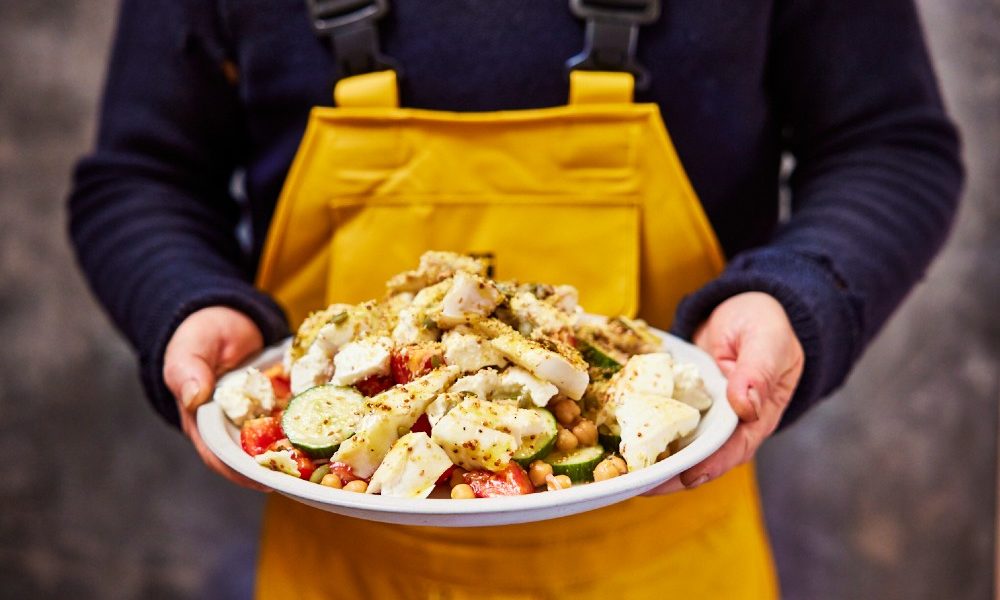When the weather starts to improve, so do my eating habits. I no longer feel the need for heavy comfort foods, but rather find myself reaching for healthier, lighter options. A couple of years ago, as winter gave way to spring, I started exploring more vegetarian recipes. This year, I’m thinking about pescatarian options. Apparently, I’m not alone. New research shows many Canadians are looking to make healthier choices post-pandemic and one-third of us are turning to sustainable seafood as our starting point.
With that in mind, I reached out to the experts at the non-profit Marine Stewardship Council (MSC) to learn more about sustainable seafood and how to incorporate it into my diet without breaking the bank.
Q: With inflation on the rise, I’m concerned it’s going to cost me even more to put seafood on the table?
A: It doesn’t have to. Seafood is one of the most diverse protein categories with everything from luxurious, special occasion items to affordable everyday options.
In the latter category, there are lots of affordable frozen and canned MSC-certified sustainable options in most of Canada’s major grocery stores.
Canadian chef Charlotte Langley concurs and offers up a few quick tips. “If you’re looking for a more cost-effective option, swap a more expensive white fish like halibut for cod, haddock or sole,” she says. “For salmon, frozen filets are usually more affordable than fresh. When harvested sustainably and prepared healthily, they all make a perfect, easy mid-week meal that’s a win-win for our health and ocean health.”
Get started with Langley’s recipe for Flaked Wild Halibut Salad with a Crunchy Seed Topper.
Q: Cool. So, if seafood isn’t a part of one’s regular menu, where’s a good place to start?
A: Given the wide variety available, there are many ways to be creative with seafood that can be easily incorporated into a weekly diet. For a fast and easy snack or light lunch/dinner consider building your own ‘seacuterie’ board packed with your favourite fresh veggies, a dip, some toasted bread or crackers and your choice of canned tuna, salmon, herring or mackerel, or the classic favourite, smoked salmon.
You don’t even have to start from scratch with new recipes. As Canadian registered dietitian Carrie Walder says, “You can add canned salmon, tuna or even lobster to scrambled eggs, pasta, casseroles, noodle soups and wraps for a new twist on family favourites, adding that frozen fish filets make a great substitute for chicken breasts in almost any dish—including family-friendly taco nights.”
Another great bonus? Fish cooks even more quickly than chicken breasts! Just keep that in mind when timing your recipe cook time.
Q: What should you look for to ensure you’re buying sustainably sourced products?
A: When it comes to labels that are meant to indicate a specific product attribute (think sustainable, organic, non-GMO or fairly traded) your best bet is to look for the word “certified”. Certifications differ from recommendations, ratings or a brand’s own claim because they usually require much more in-depth, independent verification of where the product comes from, how it was produced and whether the claims being made are trustworthy.
Fish and seafood with the MSC blue fish certified-sustainable label can only come from fisheries that meet 28 strict criteria for sustainability and undergo annual audits reflecting the most up-to-date science.
All the companies that handle MSC-certified seafood are also fully audited to help prevent practices like mislabeling and greenwashing that are unfortunately still a problem in the food chain. Independent DNA tests of MSC blue fish labelled products show that 99.6% are correctly labelled.
Every time you purchase a product with the MSC label you’re directly supporting a fishery that’s committed to protecting the health of the ocean. And, nice bonus, 5% of all royalties from the sale of MSC-certified products go towards supporting projects that advance the sustainability of fisheries locally and around the world.
For more information on sustainably sourced products check out: https://www.msc.org/en-us
Q: We tend to think that fish has to be fresh to be healthy. True or false?
A: False, while fresh and sustainable seafood is a delicious, healthy option, all seafood – whether fresh or frozen – offers high quality protein, Omega-3s and other important nutrients.
A lot of seafood is flash frozen at the peak of freshness, right on the vessel. This can be necessary because boats need to travel several days to and from fishing grounds, so the catch must be frozen to maintain the quality and freshness.
TIP: Even at the fresh fish counter, be sure to ask if the fish or seafood was “previously frozen.” If it was, you should avoid freezing it again and cook it within a few days.
Adds Walder: “Seafood truly is a perfect protein. Besides being a high-quality protein full of the healthy omega-3 fatty acids needed for brain development and function, it’s also packed with tons of essential amino acids and micronutrients like selenium, iron, vitamin D and a range of B vitamins.
The MSC, a non-profit dedicated to keeping our oceans and fish stocks healthy, has just published a gorgeous digital cookbook The Ocean Cookbook 2022. If you’re feeling inspired to try a few new recipes, check it out. The cookbook is available as a free download. Yes, you read that right. Free.

